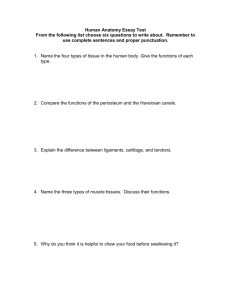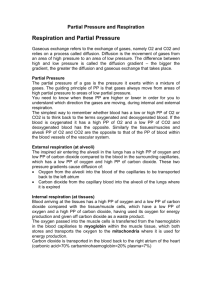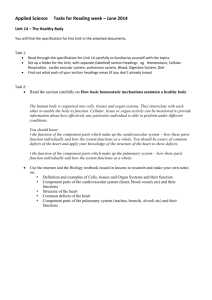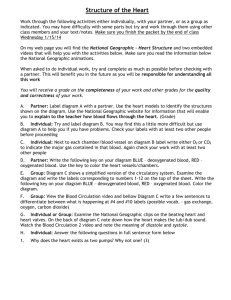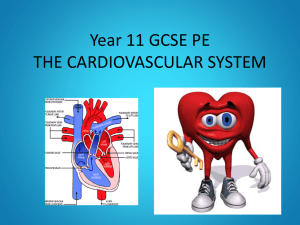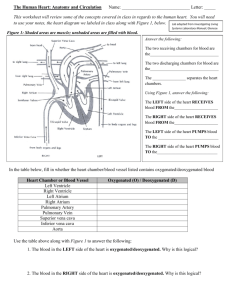Oxygen is necessary to sustain life. The cardiac and respiratory system
advertisement
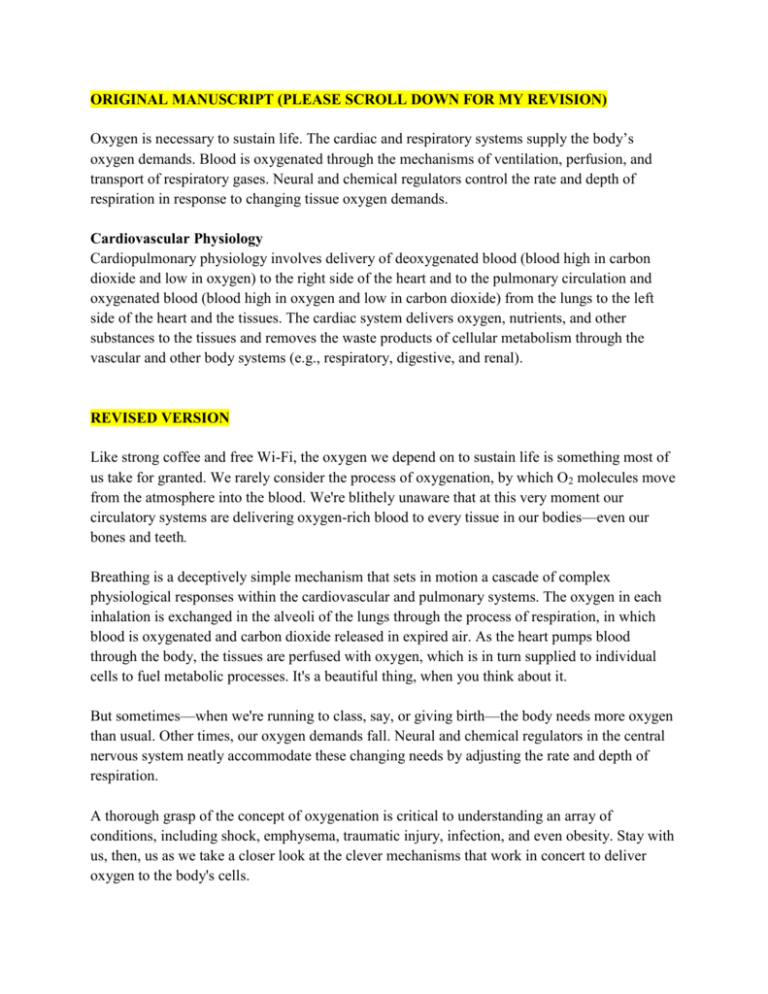
ORIGINAL MANUSCRIPT (PLEASE SCROLL DOWN FOR MY REVISION) Oxygen is necessary to sustain life. The cardiac and respiratory systems supply the body’s oxygen demands. Blood is oxygenated through the mechanisms of ventilation, perfusion, and transport of respiratory gases. Neural and chemical regulators control the rate and depth of respiration in response to changing tissue oxygen demands. Cardiovascular Physiology Cardiopulmonary physiology involves delivery of deoxygenated blood (blood high in carbon dioxide and low in oxygen) to the right side of the heart and to the pulmonary circulation and oxygenated blood (blood high in oxygen and low in carbon dioxide) from the lungs to the left side of the heart and the tissues. The cardiac system delivers oxygen, nutrients, and other substances to the tissues and removes the waste products of cellular metabolism through the vascular and other body systems (e.g., respiratory, digestive, and renal). REVISED VERSION Like strong coffee and free Wi-Fi, the oxygen we depend on to sustain life is something most of us take for granted. We rarely consider the process of oxygenation, by which O2 molecules move from the atmosphere into the blood. We're blithely unaware that at this very moment our circulatory systems are delivering oxygen-rich blood to every tissue in our bodies—even our bones and teeth. Breathing is a deceptively simple mechanism that sets in motion a cascade of complex physiological responses within the cardiovascular and pulmonary systems. The oxygen in each inhalation is exchanged in the alveoli of the lungs through the process of respiration, in which blood is oxygenated and carbon dioxide released in expired air. As the heart pumps blood through the body, the tissues are perfused with oxygen, which is in turn supplied to individual cells to fuel metabolic processes. It's a beautiful thing, when you think about it. But sometimes—when we're running to class, say, or giving birth—the body needs more oxygen than usual. Other times, our oxygen demands fall. Neural and chemical regulators in the central nervous system neatly accommodate these changing needs by adjusting the rate and depth of respiration. A thorough grasp of the concept of oxygenation is critical to understanding an array of conditions, including shock, emphysema, traumatic injury, infection, and even obesity. Stay with us, then, us as we take a closer look at the clever mechanisms that work in concert to deliver oxygen to the body's cells. Cardiovascular Physiology So how, exactly, does oxygenated blood reach the tissues? The cardiovascular system, which consists of the heart and the circulatory vessels, teams up with the lungs, or pulmonary system, to take in and deliver oxygen. Together, this powerhouse is known as the cardiopulmonary system. Here's how it works: Blood high in carbon dioxide but low in oxygen is called deoxygenated blood, because its oxygen content has been distributed to the tissues. This blood enters the right side of the heart, carried by the pulmonary circulation. Oxygenated blood, on the other hand, is rich in oxygen and low in carbon dioxide. It enters the left side of the heart, the starting line of the systemic circulation, which carries oxygenated blood to the tissues. In this manner— deoxygenated blood taken in, oxygenated blood pumped out—the cardiopulmonary system delivers oxygen and other nutrients to the body's tissues. Waste is produced as chemical processes take place in the digestive system, kidneys, and elsewhere throughout the body. As the oxygen-depleted blood returns to the right side of the heart, it carries with it the waste products of cellular metabolism. We'll examine these important processes in the following sections.
